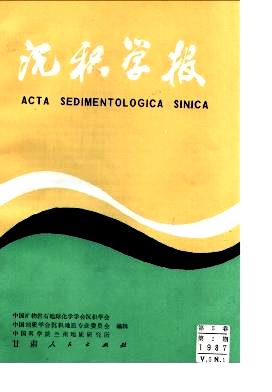DIATOM ASSEMBLAGES AND THEIR DEPOSITIONAL ENVIRONMENT IN THE YELLOW SEA SINCE THE LATE PLEISTOCENE EPOCH
- Received Date: 1984-09-27
- Publish Date: 1987-03-10
Abstract: The fossil diatom in the Yellow Sea since the Late Pleistocene can be divided into five diatom zones in ascendant order. 1. Cyclotella striata-Coscinodiscus-H yalodiscus subtilis diatom zones 2. Coscinodiscus radiatus-H yalodiscus subtilis-Cyclotella stytorum diatom zone;3. Coscinocdiscus radiatus-Coscinodiscus perforatus-Coscinodiscus argus diatom zones 4. Corcinodiscus-Cyclotella-Coscinodiscus argus diatom zone;5. Coscinodiscus diatom zone or Cyclotella stylorum-Hyalodiscus subtilis diatom zone. Most kinds of the fossil diatom from the above zones are marine species, indicating the marine environment. The two beds above and beneath Zone Ⅰ contain two fresh water algal zones, reflecting that, because sea level lowered owing to the cold climate during the Late Pleistocene Dali glaciation (Subglaciation Ⅰ, Ⅱ), the continental shelf of the Yellow Sea exposed twice and became a plain dotted with many lakes and swamps in which various species of fresh water algae lived. When the climate became warm and the sea level rose during the subinterglaciation;the continental shelf of the Yellow Sea was submerged by sea water. There lived various diatoms contained in Zone Ⅰ. Transgression happened because the climate became warm globally during the Ho-locene Epoch. In the Yellow Sea there lived many diatoms mentioned in Zones Ⅱ, Ⅰ, Ⅳ and Ⅴ. Zone Ⅰ contains the most abundant pelagic species and more subtropical species, reflecting the maxium temperature and expanded sea area. It should be considered the Atlantic period. Zones Ⅳ and Ⅴ are considered the Subbreal and Subatla-ntic period, and Zone Ⅱ the Boreal-Preboreal period. All this can be proved by 14C data.
| Citation: | Wang Kaifa, Jiang Hui. DIATOM ASSEMBLAGES AND THEIR DEPOSITIONAL ENVIRONMENT IN THE YELLOW SEA SINCE THE LATE PLEISTOCENE EPOCH[J]. Acta Sedimentologica Sinica, 1987, 5(1): 94-103. |






 DownLoad:
DownLoad: